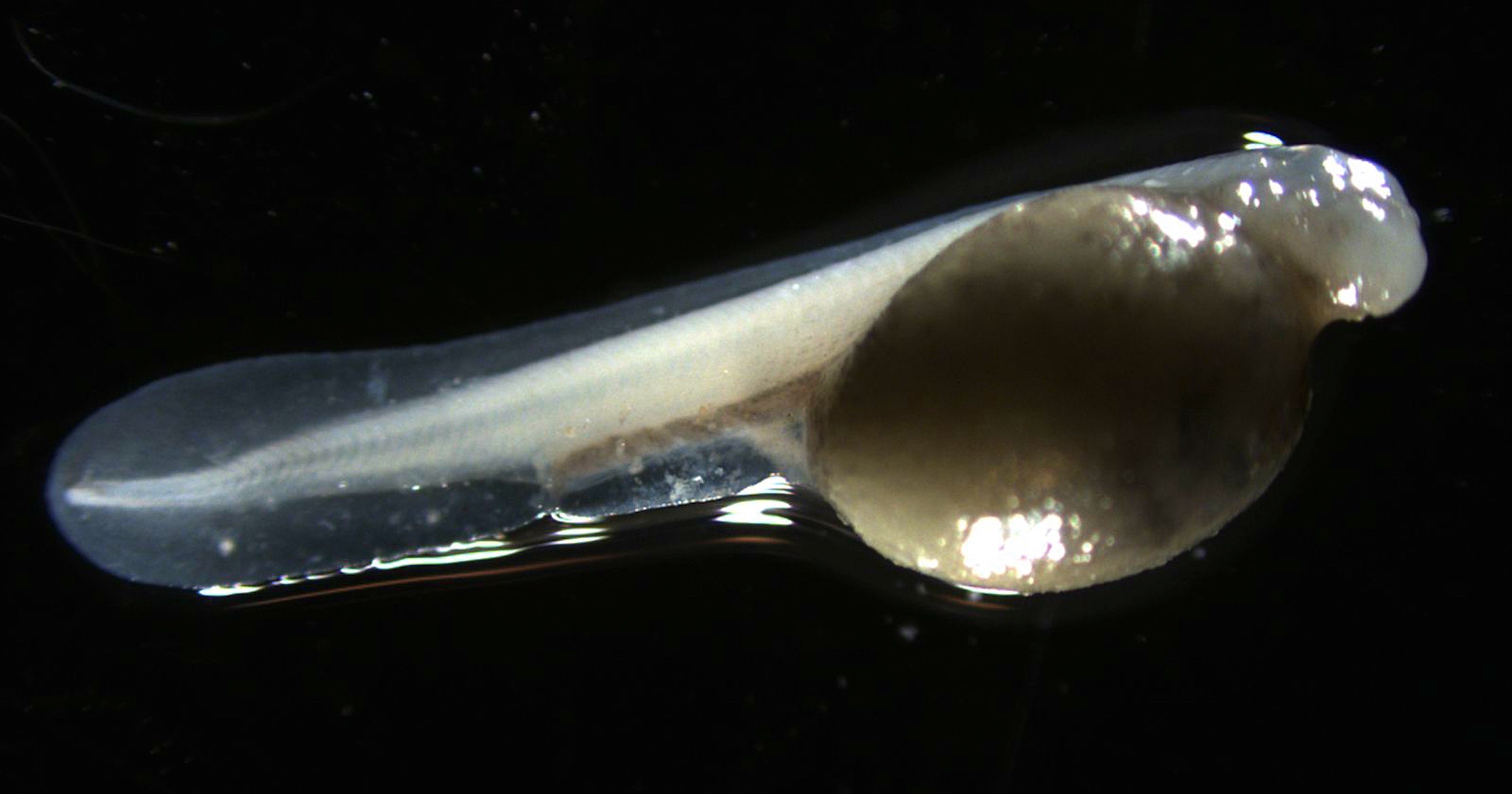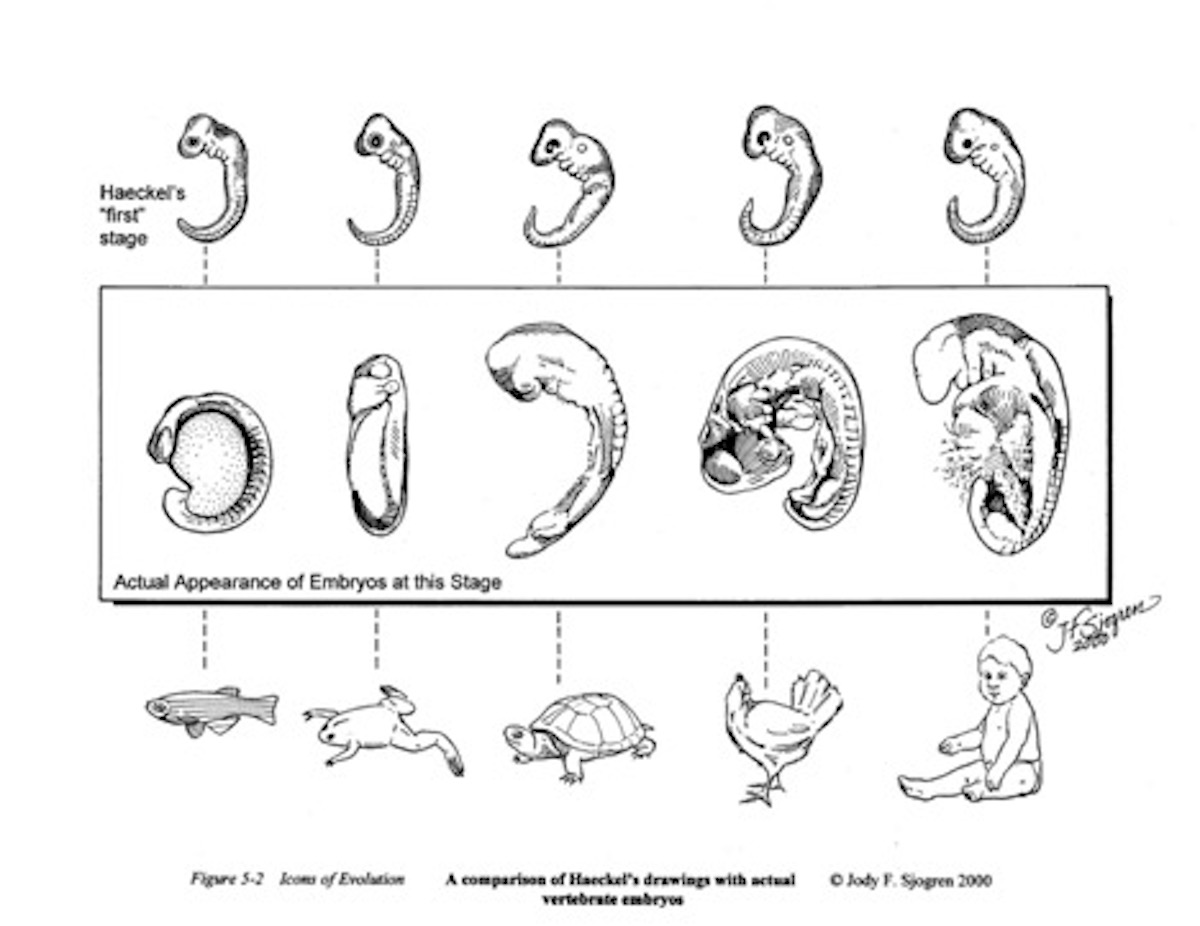 Evolution
Evolution
 Life Sciences
Life Sciences
“Evidence for Evolution”? Khan Academy Pushes Haeckel’s Phony Embryo Drawings

Someone recently forwarded me a link to a 2016 Khan Academy video on “Evidence for Evolution” with a tip that they were teaching kids outdated, junk science. It turns out that’s true. I’ve watched many Khan Academy videos over the years — sometimes just for fun, and sometimes to advise teachers on whether they are good tools to use. Generally, Khan Academy is a great resource for teachers and students alike. But when it comes to the “evidence for evolution,” Khan Academy shows that what biologist Jonathan Wells has called the “icons of evolution” — lines of evidence refuted long ago — are alive and well on the Internet.
The “Evidence for Evolution” video seems intent on recapitulating many such icons, as I will show here and in several posts to come. Those include Ernst Haeckel’s notorious embryo drawings, in addition to the homology in vertebrate limbs, fossil horse, and human-chimp genetic similarity icons. In fact, these are centerpieces of their argument for evolution. To Khan’s credit he does start his section on Haeckel’s drawings with a disclaimer. “I will put a bit of a caveat,” Khan states, because in Haeckel’s diagram “it seems he fudged a little bit of the drawing in order to make a stronger argument.” It’s great that the video includes this disclaimer, but then why use inaccurate drawings to teach students at all?
“Pretty Close to Being Correct”?
Khan doesn’t seem to care too much about the inaccuracies, because he immediately says, “But even with modern observations, these drawings are pretty close to being correct.” Really? The notion that the drawings were fudged only “a little bit,” or are “pretty close to being correct,” is rejected by leading scientific authorities who have severely criticized the use of these drawings. The late Stephen Jay Gould called Haeckel’s work “fraudulent” because Haeckel “simply copied the same figure over and over again.” The journal Science noted that “generations of biology students may have been misled” by the drawings. It quoted embryologist Michael Richardson slamming them as “one of the most famous fakes in biology.” Science went on to explain that the drawings:
show vertebrate embryos of different animals passing through identical stages of development. But the impression they give, that the embryos are exactly alike, is wrong, says Michael Richardson, an embryologist. … He hopes once and for all to discredit Haeckel’s work, first found to be flawed more than a century ago. … Not only did Haeckel add or omit features, Richardson and his colleagues report, but he also fudged the scale to exaggerate similarities among species, even when there were 10-fold differences in size.
Khan says that the “early stages” of embryos “look eerily similar.” But the figure below, from Icons of Evolution by Jonathan Wells, compares Haeckel’s embryos to accurate drawings of vertebrate embryos:

Khan further says that the drawings accurately show “proto gill slits in all of these animals” but as I explained last year, in the article “Do Human Embryos Have Gills?,” this simply isn’t true.
A Lone Bright Spot
About the only good thing in this segment of the video is that Khan explains that the idea that “ontogeny recapitulates phylogeny” is false. Yet he claims that embryo similarities are “compelling evidence for life sharing a common ancestry, coming from similar origins.” Of course, “similar origins” doesn’t necessarily mean “common ancestry,” because many organisms may be designed based upon a common blueprint. In any case, as I explained back in October at The Stream, vertebrate embryos have significant differences, none of which are hinted at in the Khan Academy video.
Sometimes evolution apologists like to claim that no one uses Haeckel’s embryos anymore and when we mention these drawings, supposedly we are attacking a straw man. Well, as long as Khan Academy leaves its video on YouTube we can definitely say this is no straw man.
Next time I’ll consider the video’s promotion of another fallacious icon of evolution: homology in vertebrate limbs.


